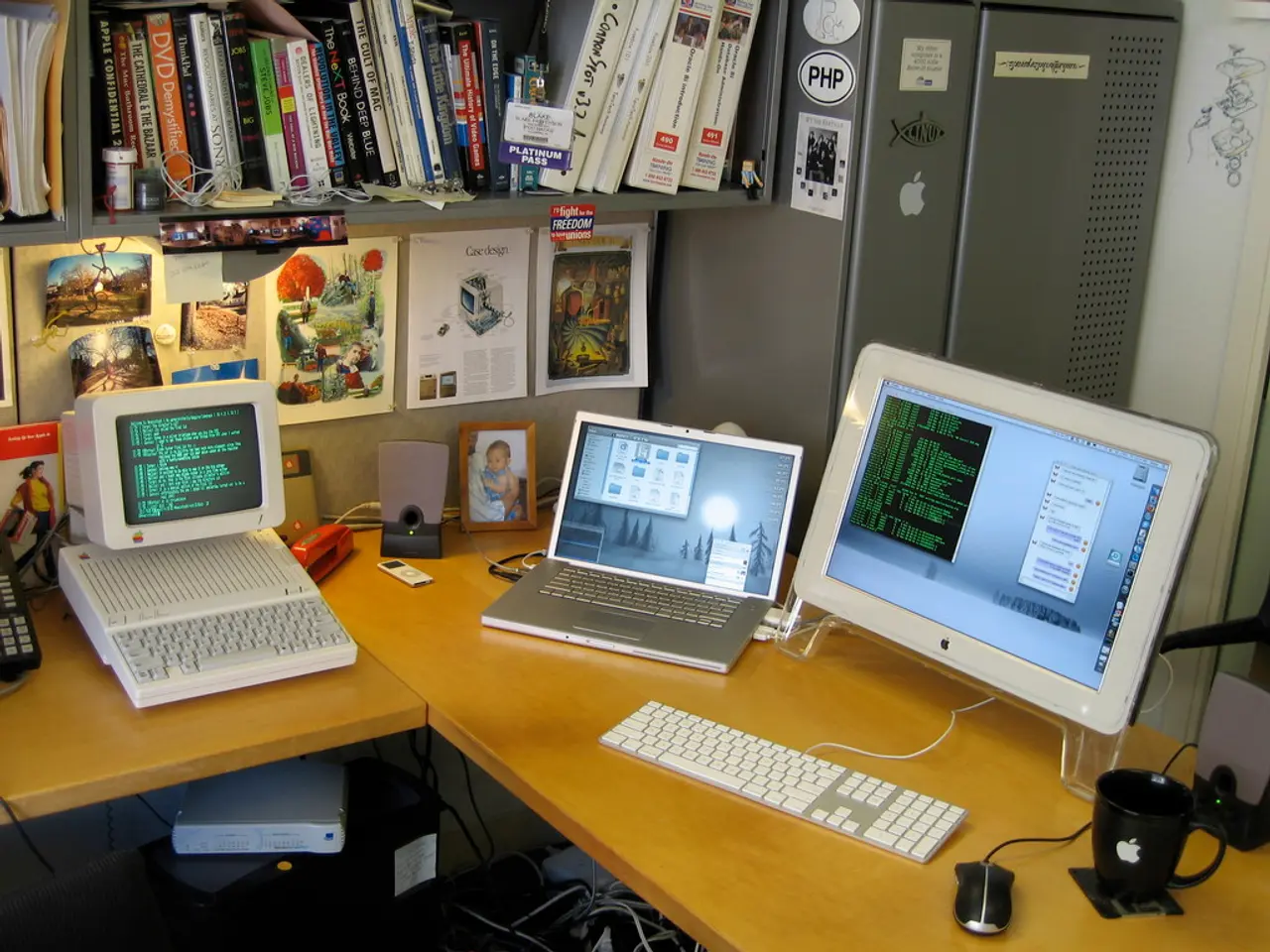Upgrades for Mac-PPC computers now include soldered RAM options.
Upgrading Soldered RAM on PowerPC Macintosh Computers: A Detailed Guide
In the world of vintage Apple computers, upgrading soldered RAM can be a valuable quality-of-life improvement, bringing these machines closer to modern standards. One such example is the first-generation iBook G3 Clamshell, which a Reddit user on r/VintageApple successfully upgraded, following a method popularized by a respected figure in the retrocomputing community, DosDude1.
To upgrade the RAM, precision is key. The process involves physically replacing the existing RAM chips with higher-capacity ones, a task that requires surface-mount soldering skills and tools. Once the new RAM ICs are soldered into place, the system will still report the original RAM amount because it reads the BootROM configuration rather than auto-detecting the new chips.
The next step is to extract the BootROM from the Mac and identify the "Boot Flash System Configuration Block," a custom data structure that encodes the soldered RAM size and machine configuration. Using a hex editor or specialized tool, this configuration block is modified to update the RAM size and timing parameters to match the new RAM chips. The modified BootROM is then reflashed back into the Mac.
Upon reboot, the Mac will read the updated BootROM configuration and recognize the larger soldered RAM. It's important to note that PowerPC Macs use a completely custom configuration format rather than EFI/BIOS SPD EEPROM data typical on Intel systems.
The key discovery enabling these upgrades was the finding and understanding of the BootROM's system configuration block document, allowing the data to be edited correctly. DosDude1's hack for soldered RAM upgrades on PowerPC Macintosh computers was made possible through this research, with a document discovered by LightBulbFun providing the necessary information.
However, it's crucial to remember that the maximum RAM capacity for the mentioned PowerPC Macintosh is 128 MB. The footprints for the RAM must match, and the RAM specs must be compatible. Changing the Hex value from 0x01 to 0x02 tells the board to look for all 6 chips.
In conclusion, upgrading soldered RAM on PowerPC Macintosh computers requires both hardware soldering to replace the RAM chips and firmware editing of the BootROM to inform the system of the new RAM configuration. This method applies generally to PowerPC Macs with soldered RAM.
Sources: 1. MacRumors forum user describing 1st gen iBook G3 soldered RAM upgrade and BootROM modification (2025) 2. DosDude1's hack for PowerPC Macintosh computers that allows for soldered RAM upgrades.
- While the hack for soldered RAM upgrades on PowerPC Macintosh computers by DosDude1 is fascinating, it's essential to acknowledge that not all vintage Apple computers like Linux-based gadgets or data-and-cloud-computing servers would benefit from such modifications.
- The process of upgrading soldered RAM on PowerPC Macintosh computers also involves using specialized hardware and technology to solder the new RAM chips in place and edit the BootROM configuration, similar to the endeavors encountered while hacking systems.
- In the broader context of technology, the principles learned from upgrading soldered RAM on PowerPC Macintosh computers can help expand our understanding of hardware limitations and the importance of data management in vintage systems, akin to implementing optimized storage solutions in modern hardware like servers or mainframe systems.




